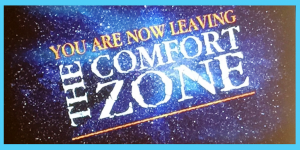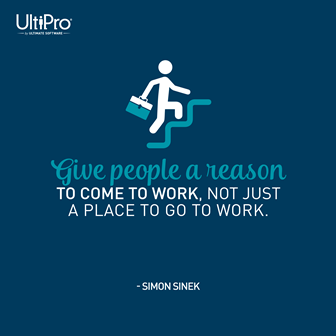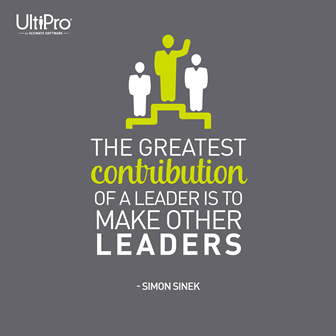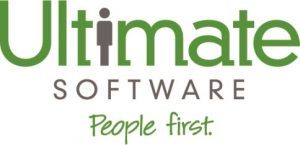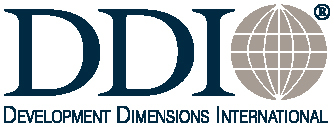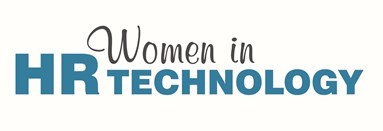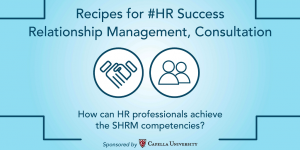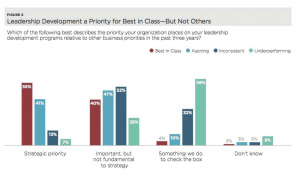Sharlyn J. Lauby's Blog, page 150
September 21, 2016
Employee Well-being Needs to Include Retirement Plans
(Editor’s Note: Today’s post is brought to you by our friends at Xerox HR Services. For more than a century, Xerox has been a leader in document technology and services. Their human resources services include advisory, technology, and administration solutions to help companies manage and engage employees. Congrats to them for 100 years of business excellence. Enjoy the post!)
One of the things that I like about human resources is the variety. Not just from the standpoint of the many different HR functions: recruiting and onboarding, training and development, compensation, etc. but from the variety of backgrounds that transition into HR careers. Organizations have an opportunity to harness the variety of experiences for the benefit of the workforce.
For instance, I know marketing and operations professionals that have moved into HR. Another area is actuarial science. Now you might be saying – actuarial science?! Yes, it’s true. I recently had the chance to chat with Dean Aloise, global HR consulting leader for Xerox HR Services. He’s responsible for leading the retirement, investment counseling, and risk management teams in the U.S. But before becoming a human resources professional, he was the operations leader for a major actuarial firm.
I was so intrigued with Dean’s professional journey that I asked if he would share his story and insights about human resources with us. Luckily, he said yes.
Dean, I was immediately intrigued by your background, particularly your experience with an actuarial firm. How did that experience translate to working in the human resources field?
 [Aloise] Actuarial science, particularly as it relates to valuing the liabilities of a pension plan, is a critical need in managing the retirement benefit programs for many organizations that sponsor a defined benefit pension plan. For some organizations, this is a key component of their benefits package, thus it’s an important part of the overall employee value proposition. So, while being a pension actuary is how I got into the HR field, as I gained exposure to other areas of HR, my interests and activities expanded into all other aspects of HR, which led to my career advancement.
[Aloise] Actuarial science, particularly as it relates to valuing the liabilities of a pension plan, is a critical need in managing the retirement benefit programs for many organizations that sponsor a defined benefit pension plan. For some organizations, this is a key component of their benefits package, thus it’s an important part of the overall employee value proposition. So, while being a pension actuary is how I got into the HR field, as I gained exposure to other areas of HR, my interests and activities expanded into all other aspects of HR, which led to my career advancement.
You mentioned defined benefits plans. I know one of your areas of expertise is in the area of retirement planning. There are lots of articles these days on the topic of retirement – ranging from whether people are actually retiring (versus transitioning to an encore career) to the financial considerations of retirement. How do you see the retirement conversation having an impact on strategic HR?
[Aloise] This is indeed a critical area for employees these days, and HR must lead the way in helping their employees achieve the best possible outcome for themselves and for their organization. HR needs to approach this strategically, understanding that the changing dynamics of retirement (employees are working longer, living longer, and seeking various ways to phase into retirement) should be embraced. By supporting their employees in this changing dynamic, HR will be in the best position to properly succession plan, but also do right by their people in helping them to achieve a successful retirement outcome.
Thinking about and planning for retirement can have a huge impact on well-being. Should HR consider retirement planning a part of their well-being programs? And if so, what would help employees better prepare for retirement?
[Aloise] Well-being must be thought of as TOTAL well-being, which includes the health, wealth (retirement), and career development of employees, as well as community and social engagement, and even spiritual elements. Traditional wellness or well-being programs initially were primarily focused on only one aspect of well-being—physical health—and this likely explains why many employers haven’t achieved the results they seek. The well-being programs of the future will achieve greater results by focusing on all five of the elements I mentioned.
Looking more closely at my area of initial focus—wealth—up until now we have focused exclusively, or nearly exclusively on accumulating wealth to fund a traditional retirement. But today, given the dramatic economic and social changes that have impacted the workplace, HR should be expanding beyond assisting employees with retirement planning and instead help them achieve greater levels financial well-being.
This is a great time of year to have this conversation. In many organizations, it’s the start of operational planning and budgeting. HR has the opportunity to educate senior management on trends in retirement and planning. What trends are you seeing that HR needs to keep on their radar?
[Aloise] Adding a meaningful financial well-being program into employees’ benefit offerings is a key trend. HR should be looking for what vendors are offering in this area, issuing requests for proposal (RFPs) and taking different programs for a test drive. Another trend that has been with us for a while now, but that continues to gain momentum thanks to continuing advances in technology, is supporting employees—and their families—in making more informed decisions about their benefits, not just when it’s time to choose their benefits but year-round, when they actually are using those benefits to meet their physical and financial well-being needs.
I’m curious. Are the conversations and trends we see in the U.S. about retirement and well-being the same conversations that are happening globally?
[Aloise] The nuances around retirement readiness and financial well-being vary by country, as social security programs, employer and individual practices vary significantly. Some countries like France have fairly robust programs that lessen the severity of the retirement readiness issue, while other countries like the U.K. share fully in the ‘grey tsunami’ risks and concerns such that the U.S. is seeing in the very near future. The dynamics of individual, company-provided and social security retirement programs overlaps come into play in a big way when looking at retirement issues globally.
At this time, we are finalizing the results of the seventh edition of our global wellness survey, Working Well—only this year we have dubbed it the Global Survey of Workplace Well-Being Strategies, reflecting the trends I discussed earlier. Among our survey’s findings is that implementing a global well-being strategy is challenging, due to the variability in culture, laws and practices across regions. This holds true not just for retirement plans, as I mentioned above, but also for physical wellness and financial well-being programs.
What is consistent around the world are the reasons for supporting employees’ well-being: improving worker performance and productivity and attracting and retaining employees. Clearly, employers believe that the well-being of their employees is critical to the organization’s success.
Employee well-being must be thought of as TOTAL well-being, including retirement - @DeanAloiseClick To Tweet
I want to thank Dean for sharing his expertise with us. I believe organizations will have to start viewing retirement as more than just a program they offer employees. And, as an increasing number of organizations adopt a global business strategy, it will be important to understand well-being in a global context.
P.S. We hope you can join us for a Google Hangout with Dean, Scot Marcotte, managing director of talent and HR solutions, and David Piltz, EMEA consulting and market leader, to talk about global well-being and retirement strategies. Follow @XeroxHRInsights on Twitter for the date and time. It’s sure to be a thought provoking conversation about the future of HR that you just won’t want to miss.
P.S.S. Google just released an update to Hangouts, so be sure to check it out beforehand.
The post Employee Well-being Needs to Include Retirement Plans appeared first on hr bartender.






September 20, 2016
Moving from Salaried to Hourly – Ask #HR Bartender
Well, we knew this was going to happen. The U.S. Department of Labor issued a ruling this summer that changed the overtime rules under the Fair Labor Standards Act (FLSA.) The new rules go into effect on December 1, 2016.
Organizations are getting ready and making changes. Some of those changes involve converting salaried employees to hourly status. That’s what today’s reader note is about.
I originally happened upon your site in looking for information about the 2016 FLSA overtime issue. I did not realize, when your site was included in search results that you were a “management” site. I am in no way involved in any kind of management. I am an employee. Until now, I was salaried exempt. And I’ve been changed to hourly, “time clocked.” I resent it immensely. I was told it was NOT a punishment, NOT a demotion. It FEELS like discrimination, punishment, and demotion it might as well be. I also feel hurt and humiliated. But all that is just too bad. I don’t feel like there is anything I can do about it.
I am a human resource, equal to any other resource; a desk, a computer, a box of computer paper-not an intelligent, emotional, feeling PERSON. I am penalized if I am late, leave early, take 30 extra minutes for lunch and such, but am not guaranteed any overtime. The employer does not have to let the non-exempt, hourly employee work overtime-ever. So why am I supposed to be impressed with being eligible for overtime? Plus, I must work 40 hours for overtime to be paid at time and a half. If I work 8 hours in a week that included a holiday I get paid only straight time for that 8 hours.
I realize I am venting and it is pointless, I just wanted somewhere to be able to say how I feel about the federally mandated overtime monster. A more legit question after all that. If, in the future, I should miraculously receive enough raises to be over the stigma point of $47,476, would I be exempt again?
While I’m not happy to receive a note from a frustrated employee, hopefully this note will help organizations and individuals process what’s going on. I’m on the Society for Human Resource Management’s government affairs A-Team and one of the key arguments we shared with our congressional representatives about this ruling was exactly the point being made by the reader – the resentment of being made hourly, or “time clocked.”
That being said, the ruling is still scheduled to go into effect in December. It’s good to see organizations taking their responsibility to maintain compliance seriously. And, they were right to tell the employee that it’s not punishment or a demotion. Because it’s not.
However, I completely understand how it feels. I remember when I became salaried for the first time. Even if you never come in late or leave early, there’s something about being salaried. And the reader is right that the company doesn’t owe employees overtime. Most organizations try to manage their overtime expenses, so it’s not a given.
There is one thing I do want to point out to all the employees impacted by this ruling. I’ve never in all my years in human resources ever seen an employee get promoted based upon the way they were paid. Promotions happen based on an employee’s knowledge, skills, abilities, and attitude. So is it possible to get promoted and break the minimum weekly salary requirement – basically becoming salaried again? Yes.
I know employees will not like this decision. Many organizations don’t like it either. But we have to follow the law. Employees, like organizations, have the ability to contact their congressperson and express their thoughts. There is a piece of pending legislation called the Overtime Reform and Enhancement Act (H.R. 5813) that doesn’t eliminate the salary threshold, but does phase it in over time to help employers and employees manage this change. Check it out and see if it’s something you want to tell your congressperson to support.
How an employee is paid doesn't change their value to the organizationClick To Tweet
Organizations are going to have to find a way to make sure that employees who are frustrated by this change continue to feel important. Just because an employee is paid differently doesn’t change their value to the organization.
Image taken by Sharlyn Lauby while going the wrong way at the Gaylord Palms Hotel in Orlando
The post Moving from Salaried to Hourly – Ask #HR Bartender appeared first on hr bartender.






September 18, 2016
Everything #HR Needs to Know About ERP
I’m very excited about today’s post because I’ve been working on it for quite some time. When I decided to write about the commonly used HR technology terms, ERP (Enterprise Resource Planning) was at the top of my list. Organizations talk about having ERPs or getting ERPs but I really had some challenges identifying exactly what it was.
So I made it my mission to find someone who could enlighten us. Thankfully, I was introduced to Brian Sommer, founder of TechVentive, Inc., a global advisory firm providing thought leadership and marketing expertise in the technology arena.
Brian, what is an ERP?
 [Sommer] Such a simple question – Yet it is one that gets argued to death in courtrooms as there is no standard definition for it. ERP (Enterprise Resource Planning) is the successor to MRP (Materials Resource Planning), a term that described a combination of manufacturing, financial and materials management software functionality.
[Sommer] Such a simple question – Yet it is one that gets argued to death in courtrooms as there is no standard definition for it. ERP (Enterprise Resource Planning) is the successor to MRP (Materials Resource Planning), a term that described a combination of manufacturing, financial and materials management software functionality.
Today, ERP suites generally refer to some combination of accounting, human resources, supply chain, professional services, manufacturing, customer relationship management and/or other modules. ERP is a marketing moniker not a fixed set of application software. Anyone can pretty much call any group of two or more software apps an ERP suite.
How does an ERP compare to a HRMS?
[Sommer] ERP refers to a broader scope of applications and potential users. HRMS is entirely focused on one major functional or process area (human resources) while ERP may canvas a much larger part of the organization.
Is an ERP considered to be SaaS? Does it operate in the cloud?
[Sommer] Many ERP products were created when everything ran on-premises (i.e., before Al Gore invented the Internet). Over time, some of these applications were enabled for other deployment methods such as a hosted services, private clouds and single-tenant, hosted cloud solutions. Very few multi-tenant cloud ERP solutions exist today although Plex, Kenandy and Rootstock are three of note. Many more are coming, though.
The last paragraph covered cloud/non-cloud deployment methods but the other part of the issue is how the software is paid for/acquired. SaaS (Software-as-a-Service) refers to the ability to pay for software on a periodic usage basis (e.g., monthly usage fees) vs. a pre-paid, one-time license. SaaS generally refers to software that is acquired on a subscription basis. Many cloud solutions are sold via a subscription basis. However, cloud vendors often offer more favorable subscription pricing to customers who are willing to lock-in for a longer term (e.g., 3-year subscription) and/or prepay a significant amount of the subscription upfront. Today, you can get:
On-premises products on a subscription basis or license
Cloud products (mostly) on a subscription basis with deeper discounts for longer-term subscriptions
On-premises solutions that can also operate in hosted, third-party or vendor-provided clouds
Private cloud versions of most on-premises solutions (and a scant few multi-tenant solutions) in a private cloud setting
And, if all that isn’t confusing enough, there are also multi-instance solutions, too. I’ve written entire articles on that deployment method.
(Editor’s Note: You can read more about Software-as-a-Service (SaaS) and the Cloud in our Everything #HR Needs to Know about HR Technology series.)
What are the benefits of having an ERP?
[Sommer] At its core, an ERP solution is really a suite of integrated applications. To get the most from an ERP suite, the applications should:
Share the same data model, tables and files
Use the same development tools
Have a common user interface and user experience
Come pre-integrated from one application to another
Use a minimal number of unique reporting tools
Predominately use the same data storage medium (e.g., in-memory database, RDBMS, file access method)
Behave and look like the same development created all modules, with the same tools and architecture at roughly the same time.
Unfortunately, many vendors create an ERP suite via a mix of self-developed applications and acquired products. If the acquired products were simply interfaced to the old ERP products, the solutions look ungainly and can behave quirkily. Some vendors even try to cloud-wash older on-premises ERP products by adding an acquired cloud application to the suite. As before, these Frankenstein creations might be hyped as a modernized ERP solution but it’s only modern at its extremities.
Historically, the benefits of an ERP solution originated from:
Significant reduction in non-value-added activities (e.g., manual work, workarounds, redundant data entry, etc.)
Improved efficiencies and productivity of the existing internal workforce
But, these productivity and efficiency gains alone will no longer carry the day as repeated re-installs and upgrades of older generation products only present small, marginal improvements to the organization. Most firms find the marginal or incremental benefits of implementing a new ERP to be substantially less than their incremental costs. This is why so many vendors (of mostly older or out-of-date ERP software) pitch their solutions in the context of having a low TCO (total cost of ownership) instead of it offering a great return on investment (ROI).
More modern ERP solutions go quite a bit further from a benefits perspective though. They use powerful analytics to accomplish things like reduced workforce attrition, better targeting of prospective customers (and recruits), improved customer service, etc. These are often accomplished via the incorporation (or modernization of ERP) of massive datasets, machine learning, smartphone telephony, geolocation services and dozens of other modern capabilities.
Are there challenges to having an ERP?
[Sommer] ERP solutions, just because of their all-encompassing business scope, are things to carefully implement. Lots of policy, process and configuration decisions must be made prior to implementation. And, of course, there usually is a lot of data to convert during the implementation, too.
The biggest challenge for many firms though is often economic. In a study we did a couple of years ago, we learned that the biggest single cost for on-premises ERP wasn’t the license, cumulative maintenance fees, hardware, systems software or initial implementation costs. Nope – the biggest cost was the permanent IT headcount to patch, maintain and upgrade the software over its useful life.
Multi-tenant ERP solutions are, for the most part, maintained by the vendor and this materially lessens the required IT personnel costs. When the vendor maintains the software, it also means that users don’t have to wait for other higher priority IT projects to get completed before their upgrades are processed.
Some will speak of vendor lock-in as an issue with large ERP software suites. It’s a legitimate concern as the switching costs of moving from one large software suite to another can be quite high. Switching ERP suites also introduces other potential risks as well. In some cases, companies have been unable to process customer orders when their ERP solution failed. Great due diligence on software (and implementers) is always advisable with any software project especially an ERP effort.
But taken as a whole, these large suites often offer great advantages. There’s often a reduction in (sneakernet) manual interfaces/integrations, fewer spreadsheets in use, fewer errors, faster access to critical business data, etc.
Is an ERP secure?
[Sommer] As long as there are skilled malcontents (or disgruntled employees), IT systems will be vulnerable. In another research effort we did, we looked at a year’s worth of data breaches and found that most were concentrated in a couple of industries (higher education and financial services). Almost all of those involved private or in-house data centers. Less than 1 percent involved a cloud service.
I’d recommend anyone considering new software to see if it meets the requirements/standards found in ISO27011, SAS 70 Part II/SSAE 16/ISAE 3402 or other criteria. This is especially true for companies employing an on-premises or private cloud solution. Does your firm’s data center meet these requirements? If not, get these fixed before implementing or consider one of the more secure multi-tenant cloud ERP products.
What do you see is the future of ERPs?
[Sommer] Old, static, unchanging ERP software is of limited value anymore. Those products were designed for the Industrial Age. However, most firms today must compete within the digital age. An ERP that wasn’t designed for big data, the Internet of Things (IoT), omni-channel retailing, etc. is out of sorts with the modern world and of no value.
We’re already seeing a second wave of cloud ERP (and HR) software emerging. These solutions are built on in-memory database technology. They can supplement their data prowess with Hadoop datasets, image files, non-relational information, weather data, social sentiment data, etc. These 2nd Generation ERP tools were designed first and foremost for the digital age firm – a firm that collects, dissects and acts on the heaping of mounds of data thrown off by consumers, suppliers, equipment, etc. every second. These solutions exist to serve the modern firm – not your grandfather’s factory.
A huge thanks to Brian for sharing his experience. If you want to hear more of his insights, be sure to follow him on Twitter @BrianSSommer.
The big takeaway for me in today’s post was Brian’s comment about the difference between total cost of ownership and return on investment. It’s a point that applies to many of our business activities not just ERPs.
Image taken by Sharlyn Lauby at Boston Logan Airport after a Workforce Institute board meeting
The post Everything #HR Needs to Know About ERP appeared first on hr bartender.






September 16, 2016
Quick Shots for #HR and #Business Pros – Employee Feedback Edition
Recently I was having a conversation with a group of new managers about feedback. It was enlightening because the discussion turned to the negative connotation of the word feedback. You know, that feeling when someone says, “I’d like to give you some feedback.” We’re just waiting for the bad news. Then when we want to deliver good feedback, we have a tendency to not even use the word feedback. We just say, “I think you do that really well.”
Feedback – both the positive and not-so positive – is important. Employees at every level of the organization need to know how to deliver good feedback on a regular basis. It might be worth adding a little bit of training into orientation or onboarding about how employees can deliver good feedback. A skill an employee will need for their entire career. Here are a couple of articles that could help:
5 Steps to Giving Good Feedback
6 Guidelines for Giving Powerful Employee Feedback
There’s one other thing we need to learn when it comes to feedback – how to ask for it. Dan Negroni in “Chasing Relevance: 6 Steps to Understand, Engage, and Maximize Next-Generation Leaders in the Workplace” talks about asking for feedback instead of getting frustrated by the lack of it. I think it’s a valuable tip for employees of any age.
Another valuable tip, this time for organizations, is to constantly monitor employee feedback. Don’t dismiss feedback as simply employee venting. Or assume that all anonymous feedback is negative. Ratedly is a service that will monitor employee feedback websites so companies don’t have to. So if you’re looking for a way to manage your brand by indexing sites like Glassdoor, Indeed Reviews, Twitter, CareerBliss, etc. then Ratedly might be worth exploring.
Speaking of technology monitoring services, I’m reminded that the HR Technology Conference & Expo is coming up soon. I’m really looking forward to attending. HR Tech is becoming very much like the Society for Human Resources (SHRM) Annual Conference. It’s a place to see old friends and make new ones. It’s exceptionally wonderful when I get to combine the two. I was honored to be interviewed by Mary Kaylor, public affairs manager for SHRM about my views in today’s HR technology space. You can check out the interview on the HRTech Insiders blog.
Feedback is a key component of our professional lives. We need to give good feedback and learn how to accept it. Organizations have to monitor and respond appropriately to feedback from customers, candidates, and employees. Feedback is everywhere. It’s time to get comfortable with it.
Image taken by Sharlyn Lauby after leaving her comfort zone in Washington, DC
The post Quick Shots for #HR and #Business Pros – Employee Feedback Edition appeared first on hr bartender.






September 14, 2016
Companies Must Identify Engagement Before They Can Impact It
(Editor’s Note: Today’s post is brought to you by our friends at Ultimate Software, a leading provider of human capital management solutions in the cloud. They were recently recognized as one of the 50 Most Engaged Workplaces in North America by Achievers. Congrats and enjoy the post!)
Employee engagement remains a top priority for business. Why? Because the results (or lack thereof) show that it needs to be. Two out of three employees are disengaged according to The Gallup Organization. This data has been stagnant for quite some time. We also know that engagement has an effect on the company culture, which in turn impacts the organization’s ability to hire and retain the best talent.
But the first step in solving any type of problem is to understand it. Not just the symptoms, but to understand the cause. When it comes to employee engagement, that means being able to define what engagement is and being in a position to identify engagement (or disengagement) behaviors within the organization.
Can managers identify engaged employees?
It starts with managers. They need to be in a position to clearly recognize the signs of engagement. If organizations look to managers to engage their teams, then managers should be able to spot the signs of employee engagement. Otherwise, how can they be held responsible for changing it?
Start with the definition. It might be tempting to think that everyone understands what employee engagement means, but I don’t know that’s the case. One person might equate engagement with employee satisfaction. Another with employees having a purpose. If your organization is looking to define employee engagement, this is one of the best employee engagement definitions I’ve come across.
Employee engagement lies at the intersection of maximum contribution for the business and maximum satisfaction for employees. It’s a sustainable level of high performance that benefits both the company and the employee.
While the definition is only a couple of sentences, it has many layers. There isn’t one characteristic or one metric to support the definition of employee engagement, which means there isn’t one action that managers can take to impact engagement. It’s more like a list of actions managers need to take to create engagement.
Now, wouldn’t it be great if that “list” was already prepared and ready for managers? Well, Ultimate Software’s Leadership Actions tool does exactly that. It identifies those everyday actions we need to take to positively impact employee engagement. With Leadership Actions, managers have access to different types of activities. Here are three examples:
1) Communication activities. These offer a starting point in your engagement strategy. How many times are we so busy with work and deadlines that we say to ourselves, “Let me just send them an email.” when we know the right thing to do is pick up the phone? Leadership Actions are quick reminders of the things we know we should be doing.
2) Work activities. Each individual leader can focus on activities that they feel align with their work responsibilities. For individuals to grow professionally, we have to play the role of coach – with our teams, colleagues, and ourselves. Leadership Actions reminds us of our responsibility to help others.
3) Culture activities. Encouraging activities that align with a great company culture are important. When we think long-term, managers have one job – to identify and train their replacement. Organizations don’t talk about it every day, but having managers focused on always finding and developing talent is critical to their success.
Leadership Actions is designed to help managers remember all the different activities that can contribute to engagement. Because let’s face it, sometimes we get distracted. And we don’t remember all of the tools we have available to us. Or we forget simply because we’re human.
For managers to truly have an impact in the organization, we have to give them the tools to truly understand engagement. It helps them hire the best talent. It improves productivity and performance. And, it improves retention. All things that determine our business success.
Speaking of business success, I’m excited to announce that I’ve partnered with Ultimate Software on a podcast series focused on how HR leaders can thrive in today’s business climate. We’ve launched a few shows and we’d love for you to check them out. The first is a discussion about company culture with Viv Maza, chief people officer for Ultimate Software, and Steve Browne, executive director of human resources at LaRosas Inc. It’s really a terrific conversation about building culture and not the same old, same old you’ve heard before. And I’m not just saying that because I’m a part of it. You can download the first show and check out the others on the Ultimate Software blog.
Managers are the key to the employee engagement strategy. But they need the tools and support to be successful. Organizations need to figure out how they will provide that support.
The post Companies Must Identify Engagement Before They Can Impact It appeared first on hr bartender.






September 13, 2016
What You Can Do When HR Doesn’t Listen – Ask #HR Bartender
I’m not naïve. There are plenty of HR horror stories out there – just like any profession. That being said, human resources is often the “go-to” place for employees and they need to feel comfortable coming to HR. Today’s reader note asks what to do when you feel that isn’t possible.
I was recently accused of harassing and bullying by someone with anxiety. She kept a log over 8 months and never said anything to me.
When HR met with me, they never listened to my side of the story. Now, I have anxiety and depression. I’m having a hard time working because i was told that “I need to hold myself to a different standard.” because the other employee has anxiety.
I feel targeted and can’t turn to HR because they didn’t listen or care during the first interaction.
Like the reader mentioned in their note, we’re only hearing one side of the story. So we can’t directly respond to some of the comments, but there are a few things we can discuss. I asked our friend Heather Bussing if she would share her expertise and, lucky for us, she said yes! Heather is an employment attorney and regular contributor at HR Examiner. She’s shared her expertise with us before. This post on why job references are important is one of my favorites.
As always, please remember that Heather’s comments should not be construed as legal advice or as pertaining to any specific factual situations. If you have detailed questions, they should be addressed directly with your friendly neighborhood labor attorney.
Heather, one of the first things that struck me about this story is that the reader knows that the other employee has anxiety. We don’t know how they learned that piece of information. Is an employee having anxiety something HR should know and/or share with others?
[Bussing] If the anxiety rises to the level of being a disability under the Americans with Disabilities Act (ADA) or requires leave under the Family and Medical Leave Act (FMLA), it would make sense that HR knows about the condition because the employee would have disclosed it when she asked for leave or accommodation. The employee may also have simply told HR in the course of making the bullying complaint.
As for HR sharing with others, it is important not to disclose medical information about employees to anyone who does not need to know it. Confidentiality is sometimes required by the Health Insurance Portability and Accountability Act (HIPAA), although most employers have very limited, if any, coverage under HIPAA. Mostly, it has to do with privacy, trust, and not promoting gossip or speculation about people, taking leave, or changing jobs. It is simply in everyone’s best interest, particularly HR’s, to keep employee health information confidential as much as possible.
When dealing with leave issues or even an investigation of a complaint, it is best to keep any discussion of medical information general. Discuss it as a ‘personal issue’ or ‘health issue’ rather than a specific medical condition. Digital versions of medical reports for ADA, workers’ compensation, or FMLA, should be password protected or encrypted. Lock up any hard copies.
How a company should accommodate someone with anxiety gets very tricky because there is simply no way to make someone with anxiety feel safe or comfortable all the time. (If there were, I would sign up immediately.)
My sense (guess) in this case, is that the employee with anxiety has identified with her diagnosis and spends some time and energy letting other people know. If so, she probably told both the other employee and HR. When that happens, the information is no longer confidential. But HR should continue not to discuss it except with people who need to know regarding any investigation, leave, or other accommodation.
The note talks about the initial meeting with HR and not feeling like they were being heard. Is there anything an employee can do during (or after) the meeting to get their side of the story told?
 [Bussing] In this situation, it did not seem like she was disciplined or there were any other admonitions except to try to be nice. So, it would be good for her to take this into account when considering whether or not she was heard or believed. If HR truly believed the person complaining, there would likely have been a stronger response. Bullying is not okay. So my take is that HR is taking both sides with a grain of salt.
[Bussing] In this situation, it did not seem like she was disciplined or there were any other admonitions except to try to be nice. So, it would be good for her to take this into account when considering whether or not she was heard or believed. If HR truly believed the person complaining, there would likely have been a stronger response. Bullying is not okay. So my take is that HR is taking both sides with a grain of salt.
Yet, not feeling heard when there is a claim or dispute is a common issue. Sometimes it is because HR believed the first story they heard or have some other (reasonable or unreasonable) bias toward the other employee. Sometimes, it has more to do with the employee’s feelings and impression because HR did not agree with her completely.
Either way, it is a difficult position. If the employee goes over HR’s head, it will create more drama and almost always upsets HR, which can make things more difficult for the employee down the line.
So I usually advise sitting down and writing out what she wants HR to know and understand. Then get someone who has some objectivity and who will tell her the truth to look at it and see where it needs clarity or toning down. Employment lawyers are good at this and may even do it as part of an initial consult.
She should explain in the memo that she left the meeting not sure whether she was clear in explaining what happened and wanted to follow up in writing to make sure HR understood. If there is a decision she wants modified or clarified, ask for that specifically. The important thing is to stick to the facts and make the memo as clear and reasonable as possible. If all she wants is to be heard, this would create a clear record.
If there is something specific that she wants, always start with HR and only go beyond that (either to a higher level internally or making a legal claim) after discussing it, putting it in writing, and if applicable, following grievance or other policies.
Don’t assume that just because things did not go your way, that you were not heard or understood. Many HR decisions are about finding balance and compromise when there are competing stories. If you need your way, all the way, all the time, it may not be HR that is the trouble.
The reader mentions that this incident has caused them to experience anxiety and depression that is having an impact on their work. Do they need to inform the company that they need a work accommodation? Why or why not?
[Bussing] At this point, she may have situational anxiety and depression that could benefit from therapy. She has a choice about whether to get that on her own, request FMLA leave if needed, or make a workers’ compensation claim. The more the employer is involved, the more the employee may be required to reveal information about her therapy or medical treatment and life. So consider it carefully.
If the condition becomes chronic and more severe, it may make sense to ask for leave either under the ADA if the condition qualifies, or the FMLA either way.
The reality is that just getting entangled in the process of requesting leave or making a claim can exacerbate the anxiety and depression. So she should weigh the options with her doctor or therapist and if it seems like she will need leave, also talk to an employment attorney.
Is it fair to tell an employee that they need to hold themselves to a different standard? Is that setting a precedent?
[Bussing] The oddest part of this story is the idea of telling an employee to hold themselves to a different standard. What does that mean?
I don’t have enough information to understand whether there is manipulation and bullying going both ways. But it appears that there is now a competitive anxiety contest starting. If so, giving either side an advantage by imposing a different standard of conduct or behavior on one side is a really bad idea.
In addition, requiring employees to be kind is not a reasonable accommodation. It should be the general standard of conduct for all, even if some people have anxiety and depression.
While there can be some tolerance for difficult behavior due to someone’s medical condition, if it is permanent, they may not be qualified to have the job. This is a complex ADA accommodation analysis that is not possible here.
But the focus should be on the person with the anxiety and depression, whether she can do the job, and how to get her help. The company should not allow her to do whatever she wants while the rest of the company has to walk on eggshells.
Last question, what are the implications of employees failing to bring issues to HR because they don’t feel HR listens or cares?
[Bussing] It depends. If employees feel comfortable talking to their managers and the managers are responsive, then HR rarely gets directly involved, and there will be few implications.
In other organizations, where HR is the mediator of workplace issues, the implications are much larger. When people don’t trust HR, they usually deal with difficulties at work by starting to hate their jobs, which leads to performance issues, which leads to losing employees. Attrition is expensive, time consuming, and puts a burden on the remaining employees while the organization finds replacements.
It also means that HR will not hear about problems until it is too late, which often means more claims and lawsuits.
But most of all, if employees don’t trust HR, they probably don’t trust any of the leadership and that is a culture and management problem that does not bode well for the future of the organization.
Listening and caring are the foundation of working with other people. If HR is not getting that right, they have lost their way.
A HUGE thanks to Heather for sharing her knowledge. Be sure to check out Heather’s writing on HR Examiner for more great insights. As you can see, these situations are not always easy to facilitate. And some of what has to be fleshed out is the context of the situation.
One thing is certain, employees need to feel that they can go to HR. They might not like what HR says, but they are comfortable speaking with someone in the department.
Image taken by Sharlyn Lauby after enjoying tea on the Queen Mary
The post What You Can Do When HR Doesn’t Listen – Ask #HR Bartender appeared first on hr bartender.






September 11, 2016
High Performing Organizations Have Leadership Diversity – #LeadLikeAGirl
Every year in March, we celebrate the accomplishments of women on International Women’s Day. Women have and continue to create, discover, and innovate new products and services for the global economy. However, much progress has been made, there are still setbacks. It’s widely reported that women make 79 cents for every dollar earned by men.
Another widely reported statistic is the number of women leaders in the technology sector. According to the National Center for Women and Information Technology (NCWIT), only 25 percent of the computing workforce were women last year. If you examine the data further, 5 percent were Asian, 3 percent were African-American, and 1 percent were Hispanic.
This year’s HR Technology Conference and Expo is hosting a new event, “Women in HR Technology.” It will take place on Tuesday, October 4, 2016 prior to the conference. The cost to attend is included your conference registration. Don’t forget HR Bartender readers can receive a $200 discount on registration using the code LAUBY16.
The closing keynote for the Women in HR Technology event is Dr. Tacy Byham, CEO of DDI, a global leadership consultancy that helps the world’s most successful companies transform the way they select, develop, and accelerate leaders. They have over 42 offices in 26 countries. She is the author of “Your First Leadership Job.” I had the chance to speak with Dr. Byham about the title of her session – #LeadLikeAGirl.
Dr. Byham, I don’t want to give away your session, but can you provide a brief description of what #LeadLikeAGirl means?
 [Byham] I was inspired by the ‘Like A Girl’ advertising that ran during the Super Bowl. Research tells us that confidence in young women plummets during puberty. It’s time to reclaim the word ‘girl’ as a strong term and eliminate the stereotype that the word implies weakness.
[Byham] I was inspired by the ‘Like A Girl’ advertising that ran during the Super Bowl. Research tells us that confidence in young women plummets during puberty. It’s time to reclaim the word ‘girl’ as a strong term and eliminate the stereotype that the word implies weakness.
I just had the conversation at the Association for Talent Development Conference. The message is resonating with people, not just women. During the session, I’ll be sharing some new data from DDI about women in the workplace and encouraging everyone to pay the message forward.
(Editor’s Note: If you haven’t seen the “Like A Girl” ad campaign, you can view it on YouTube.)
I’m glad you mentioned the stereotypes associated with the word “girl.” Since there are people who perceive it with a negative connotation, especially in a business context, why use it?
[Byham] I attended Mount Holyoke College, one of the oldest women’s educational institutions in the U.S. I remember hearing on my first day, “You’re not at a girls’ school; you’re at a women’s college.” We were told to introduce our fellow classmates as women. I totally understand that #LeadLikeAGirl is provocative. But it’s time for us to become more gender neutral. The goal isn’t to have men acting like women. Each of us needs to focus on becoming the best ever version of ourselves.
#LeadLikeAGirl is about reframing the conversation for the next generation of leaders in the workplace.
How does technology influence #LeadLikeAGirl (and vice versa)?
[Byham] Really great question. DDI has been working with the professional services firm Ernst & Young to research what it takes to become a digital leader. Not just your typical leadership skills but including how environment, personality, and curiosity factor into leadership. We’re also looking specifically at women in leadership. Our goal is to have findings to share in early 2017.
For example, one of the things we’ve learned is that women have nearly 10 times more white matter than men. This doesn’t mean that women are smarter, but it does indicate that women are better at making connections between things. It might explain why women are considered better multitaskers. There’s a plus side to white matter: it allows an individual to see concepts in a broad context, possibly creating new opportunities for exploration. There’s also a downside: those connections might mean that we continuously recall or rehash mistakes, holding us back from opportunities for growth.
Much has been said about the lack of women in the technology sector. For women looking to pursue a technology career, what advice would you give them?
[Byham] At DDI, our goal is to help organizations select and develop leaders. We do that by identifying a person’s strengths. DDI uses a scientific assessment center, think of it as similar to a flight simulator. We have participants show us how they would handle multiple activities such as developing a presentation, resolving a conflict between employees, etc.
When it comes specifically to technology, let me share with you one slice of data. Our research has found that if you majored in a technology-related field, your strengths are in the areas of implementation and execution, while gaps might appear in building influence and developing compelling communications.
What can women do to help other women in their careers? Anything specific for tech careers? And what can men do? (Is it the same or different?)
[Byham] In the August issue of Harvard Business Review, there’s an article about “Why Diversity Programs Fail.” It’s a good read. The big takeaway is that if organizations want diversity, they need process change. Organizations have to remove unconscious bias to create high potential talent pools. Women must have equal access to the same opportunities for coaching, mentoring, work experiences, etc.
Here are two things both men and women can do: On an organizational level, influence the processes that are keeping change from taking place. On an individual level, offer to sponsor a more junior individual. Give them a voice to speak up and ask for mentoring and coaching.
Diversity isn’t a women’s issue; it’s an organizational issue. We have to create cultures that allow for diversity of thought, ideas, innovation, and creativity. Organizations with greater diversity do better in every way – they hire the best talent and it shows in their bottom-line results.
My thanks to Dr. Byham for giving us a peek into her #LeadLikeAGirl session at the HR Technology Conference in October. I know I’m excited to attend the event.
The only way we’re able to influence change is by getting educated and taking action.
Image taken by Sharlyn Lauby in a dark Washington, D.C. restaurant hallway on the way to the (right) restroom
The post High Performing Organizations Have Leadership Diversity – #LeadLikeAGirl appeared first on hr bartender.






September 9, 2016
Recipes for #HR Success: Relationship Management and Consultation
(Editor’s Note: This series is brought to you by our friends at Capella University. Capella is an accredited online university dedicated to providing an exceptional, professionally-aligned education that puts you in the best position to succeed in your field. They offer bachelor’s, master’s and doctorate degrees as well as certificate programs for human resources and business professionals. Enjoy the post!)
One of the most common terms associated with human resources is business partner. In this role, HR needs to play the role of ally. That doesn’t mean always agreeing with every idea or suggestion. It means doing what’s in the best interest of the organization. Even if what’s in the organizations best interest is change.
The pace of change facing business today is phenomenal. It’s hard to believe, but over the past decade, we’ve seen the emergence of Facebook, YouTube, the iPhone and iPad, and self-driving cars. These innovations have changed the way we do business. In turn, HR has to monitor, propose, and implement changes to the talent side of the business by using their business partner status to consult internally.
But, there’s no way HR can be effective as a business partner and consultant if they don’t know how to manage relationships. The first step in any change effort is buy-in. Getting key stakeholders to listen and buy-into new ideas involves trust and positive working relationships.
And, it involves always asking the question, “What do you want to do?”
When communicating with others, it’s important to find a way to communicate on the other person’s level. If they like talking about the numbers, then that’s the best way to get their attention. If they prefer to have long conversations after getting written proposals, then you know what you need to do.
Being an effective internal consultant is about building relationships. It’s about understanding how and when others want to communicate, then giving them information in that format. Notice I didn’t say it was about telling people what they want to hear. We can’t always control the message. But we can do our best to deliver the message in the right way.
P.S. ICYMI, check out the previous posts in this series on HR Success competencies:
Business Acumen and Communication
The post Recipes for #HR Success: Relationship Management and Consultation appeared first on hr bartender.






September 8, 2016
Leadership Development Isn’t Fundamental to Business Strategy
I believe that everyone is a leader.
Leadership is defined as the ability to influence others. Using that definition, everyone has the ability to influence, so everyone is a leader. Logically, it also means that everyone needs development.
Now, I do realize that some organizations consider leadership development to be a program designed exclusively for individuals who will hold a certain job title within the organization. But regardless of who the program is for, I hope we can agree that it needs to be effective.
Harvard Business Review (HBR) recently released a study on “The State of Leadership Development.” The results are rather startling.
Only 7 percent of organizations believe their leadership development programs are best in class.
Even among best in class programs, 40 percent of respondents feel that leadership development is only important – not fundamental – to business strategy.
How can the majority of people think leadership isn’t fundamental to strategy? I mean, we need people to develop the strategy and we need people to execute the strategy. The better they are; the better the strategy.
I will admit one of the key findings didn’t surprise me. Three-quarters of respondents believe leadership development needs to be more innovative in their learning techniques. However, in defense of learning professionals everywhere, I do believe that it takes time and resources to create “innovative learning techniques.” This shouldn’t be code for learning on the cheap.
The good news is this trend can be changed. Best in class leadership development programs have a significant impact on financial success (94%) and competitive performance (70%.) But obviously, to achieve those results involves not only a fantastic leadership development program but a truly supportive organization – both in terms of words, action, and resources.
The HBR study is very interesting and offers some benefits and solutions for organizations looking at their leadership pipeline. Finding leaders – really good leaders – is a challenge. Organizations are going to have to consider developing their own leaders for the future. That means deciding if you’re going to do it half-arsed or really well.
Image taken by Sharlyn Lauby at the Gainesville 34th Street Graffiti Wall
The post Leadership Development Isn’t Fundamental to Business Strategy appeared first on hr bartender.






September 6, 2016
Can HR Be Trusted with Confidential Information – Ask #HR Bartender
Working in a family-owned business is unique. That doesn’t mean it’s bad. It’s just different. How you view the situation could depend on whether you’re a member of the “family” or not.
Today, many organizations allow family members to work together. Maybe not in the same department, but for the same company. Especially in larger organizations where family members might not have daily contact.
However, one thing that can be challenging when you mix work and family is when HR is either part of the family that owns the company or they have family members working for the company. That’s what today’s reader note is about.
We’re a small company. The human resources manager is married to an executive and their daughter is an employee. The daughter is being promoted to positions that she is not qualified.
The company has pretty high turnover, and staff do not feel the HR manager would maintain confidentiality if an issue were brought to them. The company was recently bought by a larger company where the company’s HR manager is also related to an executive.
Let me start off with a tough comment. We do not know whether or not the daughter is qualified or not qualified. It’s also possible that employees viewing this situation from the outside don’t know either. As a HR professional, I’ve had employees complain about a co-worker’s promotion (i.e. saying they’re not qualified) and the employee was qualified. The person complaining just didn’t know it. So it’s hard to address this. I certainly understand the perception.
As I mentioned at the beginning of the post, we can talk about what makes working with family unique. I’ve written a few pieces on HR Bartender before about the benefits and challenges:
Working HR in a Family-Owned Business
Are Family Members a Liability at Work
Understanding Conflict of Interest
What struck me about this reader note was the comment on confidentiality. Human resources, regardless of their relationships, has to maintain the right amount of confidentiality. Especially if they are conducting an investigation. I love this interview with Jonathan Segal, partner at Duane Morris LLP about what happens during an investigation. Conducting ourselves in a proper way involves ethics. And ethics needs to exist at every level of the organization. Here are a few articles about ethics to consider:
Recipes for #HR Success: Ethical Practice
I don’t want to say that HR cannot have friendships or relationships within the organization. There are many HR pros who do it successfully. HR does need to be perceived as ethical. Employees need to feel that HR will do the right thing, including keeping information confidential (as appropriate.) This isn’t a requirement of HR only in family-owned businesses. It’s a requirement of HR at any organization.
When HR isn’t trusted within the organization, there’s a problem. And companies have to figure out how to fix it.
Image taken by Sharlyn Lauby on the streets of Washington, DC
The post Can HR Be Trusted with Confidential Information – Ask #HR Bartender appeared first on hr bartender.






Sharlyn J. Lauby's Blog
- Sharlyn J. Lauby's profile
- 10 followers







